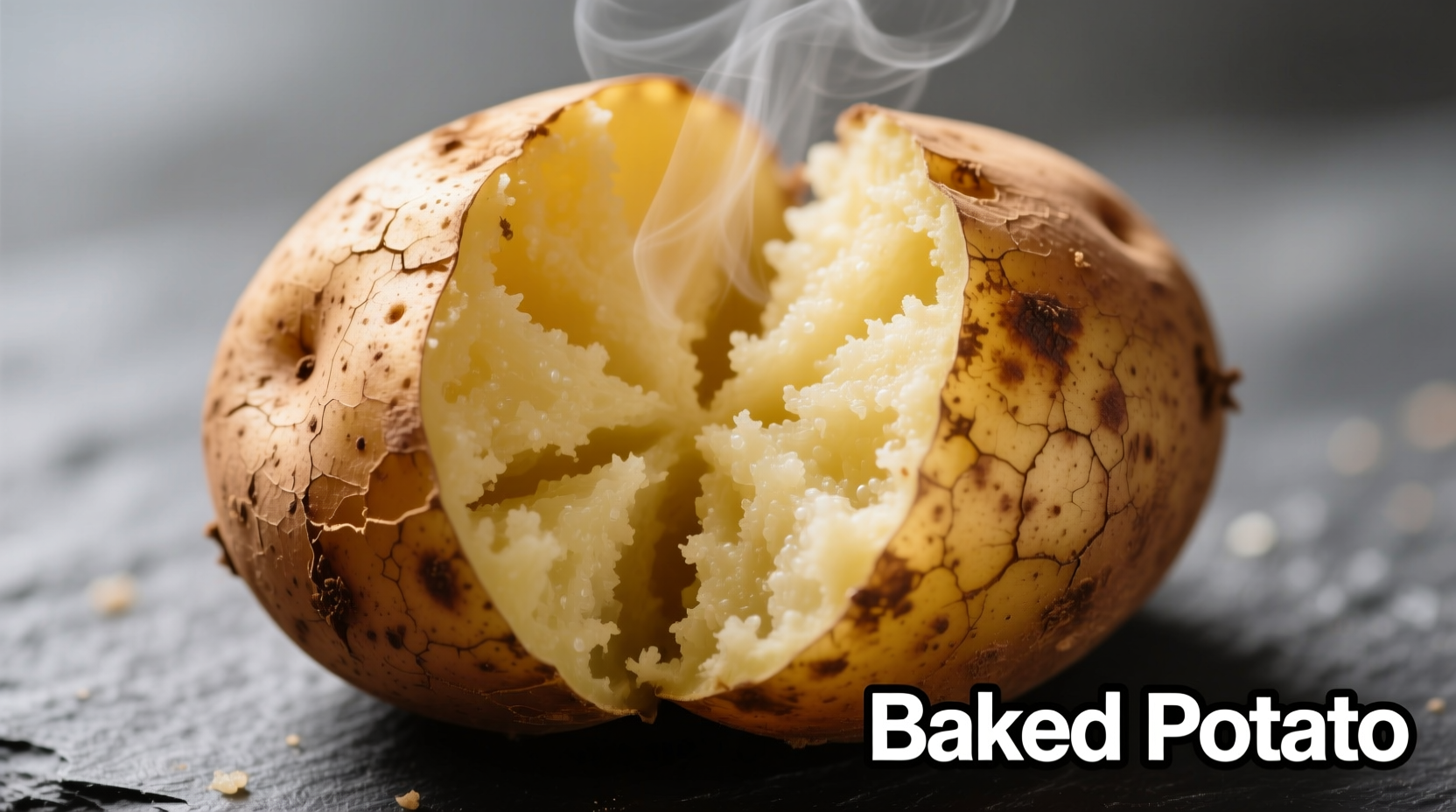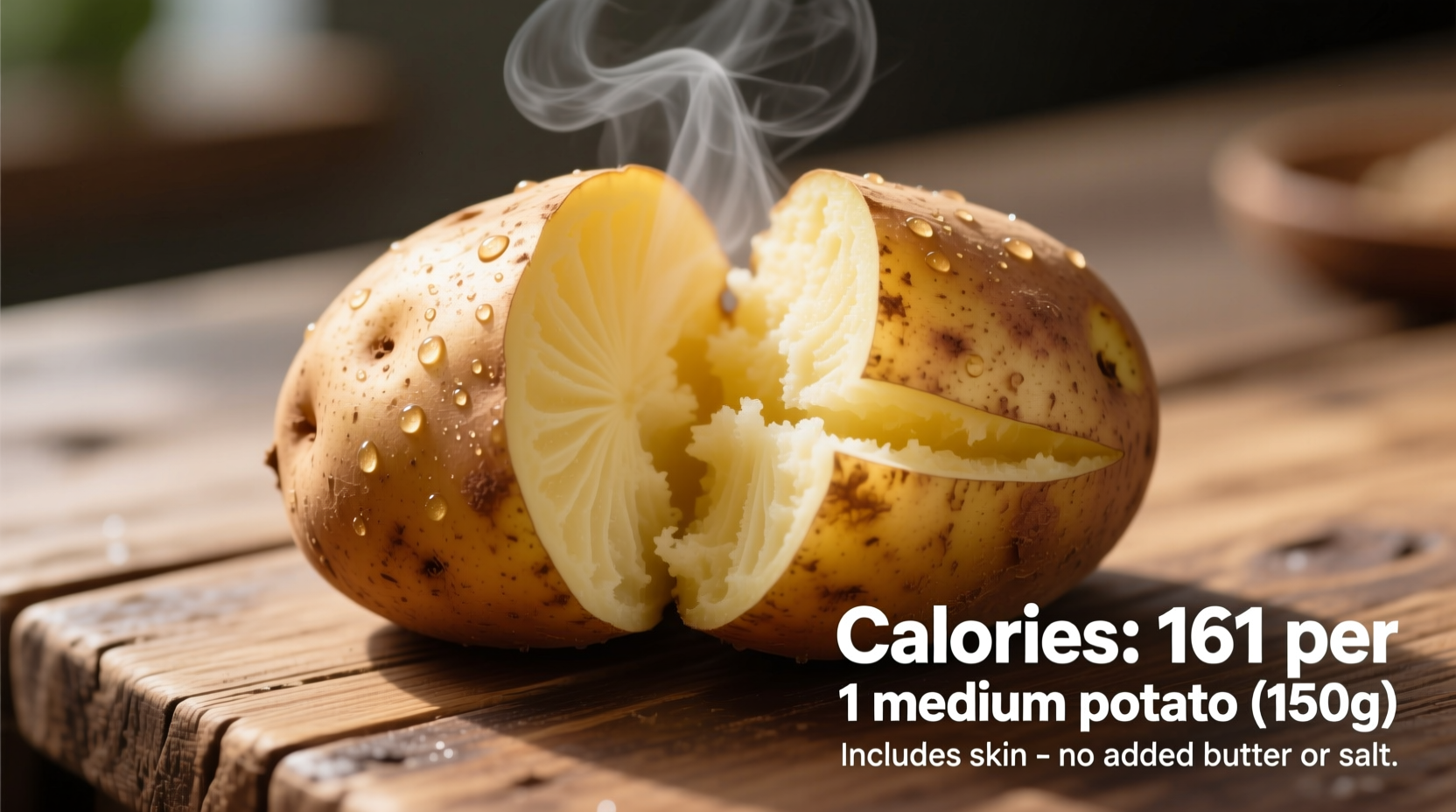Why Baked Potato Calories Matter for Your Diet
Understanding the calorie content of staple foods like baked potatoes helps you make informed dietary choices without sacrificing satisfaction. Whether you're tracking macros, managing weight, or simply eating mindfully, knowing exactly what you're consuming matters. The good news? Baked potatoes with skin offer remarkable nutritional value for their calorie count.
Breaking Down the Calorie Count
The exact calorie count in your baked potato depends primarily on size. Here's a detailed breakdown based on USDA's National Nutrient Database:
| Size Category | Weight (grams) | Calories | Dietary Fiber |
|---|---|---|---|
| Small (2" diameter) | 138g | 110 | 2.1g |
| Medium (2.5" diameter) | 173g | 161 | 3.8g |
| Large (3" diameter) | 299g | 278 | 6.6g |
| Jumbo (3.5" diameter) | 369g | 333 | 8.1g |
This factual comparison shows how portion size dramatically affects calorie intake. Notice that the fiber content increases proportionally with size, which is crucial for understanding the potato's nutritional value beyond just calories.
What Actually Contributes to the Calories?
Unlike many starchy foods, baked potatoes derive nearly all their calories from natural carbohydrates. A medium potato contains about 37 grams of carbs, 4.3 grams of protein, and virtually no fat. The skin itself contributes approximately 10-15% of the total calories but contains nearly half the fiber.
According to research published in the Journal of Agricultural and Food Chemistry, potato skins contain higher concentrations of certain nutrients compared to the flesh. This means keeping the skin on provides significantly more nutritional value without substantially increasing calorie count.
Context Boundaries: When These Numbers Apply
These calorie figures apply specifically to plain baked potatoes prepared without added fats or seasonings. The moment you add toppings, the nutritional profile changes dramatically:
- Tablespoon of butter: +102 calories
- Tablespoon of sour cream: +26 calories
- Tablespoon of bacon bits: +15 calories
- Tablespoon of shredded cheese: +35 calories
Interestingly, certain preparation methods can actually reduce calorie density. Research from the University of Surrey found that cooling a baked potato after cooking increases its resistant starch content, which provides fewer metabolizable calories while offering additional gut health benefits.
Nutritional Benefits Beyond Calories
While calorie count matters, focusing solely on calories misses the bigger nutritional picture. A medium baked potato with skin provides:
- 27% of your daily vitamin C needs
- 26% of your daily potassium requirement
- 19% of your daily vitamin B6
- Significant amounts of magnesium and iron
According to the American Journal of Clinical Nutrition, potatoes rank among the top vegetable sources of potassium, which many Americans lack in their diets. The skin contains valuable antioxidants called flavonoids that help combat inflammation.

How Baked Potatoes Compare to Other Preparations
Many people wonder whether baking is the most calorie-conscious way to prepare potatoes. Here's how common preparation methods stack up for a medium potato:
- Baked with skin: 161 calories
- Boiled with skin: 157 calories
- Mashed (no additions): 172 calories
- French fries (baked): 312 calories
- French fries (deep-fried): 365 calories
The difference between baking and boiling is minimal, but frying dramatically increases calorie content due to oil absorption. The Academy of Nutrition and Dietetics notes that baking preserves more nutrients compared to boiling, where water-soluble vitamins leach into cooking water.
Practical Tips for Enjoying Baked Potatoes
Here's how to maximize satisfaction while managing calories:
- Keep the skin on for added fiber that promotes fullness
- Use flavorful, low-calorie toppings like salsa, Greek yogurt, or herb-infused vinegar
- Pair with protein to balance blood sugar response
- Measure portions if calorie counting - a medium potato fits comfortably in your palm
- Cool before eating to increase resistant starch content for additional health benefits
Dietitians at the Mayo Clinic recommend treating potatoes as a vegetable rather than a starch in meal planning, which helps balance their nutritional contribution to your diet.
Common Questions About Baked Potato Nutrition
Let's address some frequent questions about baked potato calories and nutrition:











 浙公网安备
33010002000092号
浙公网安备
33010002000092号 浙B2-20120091-4
浙B2-20120091-4